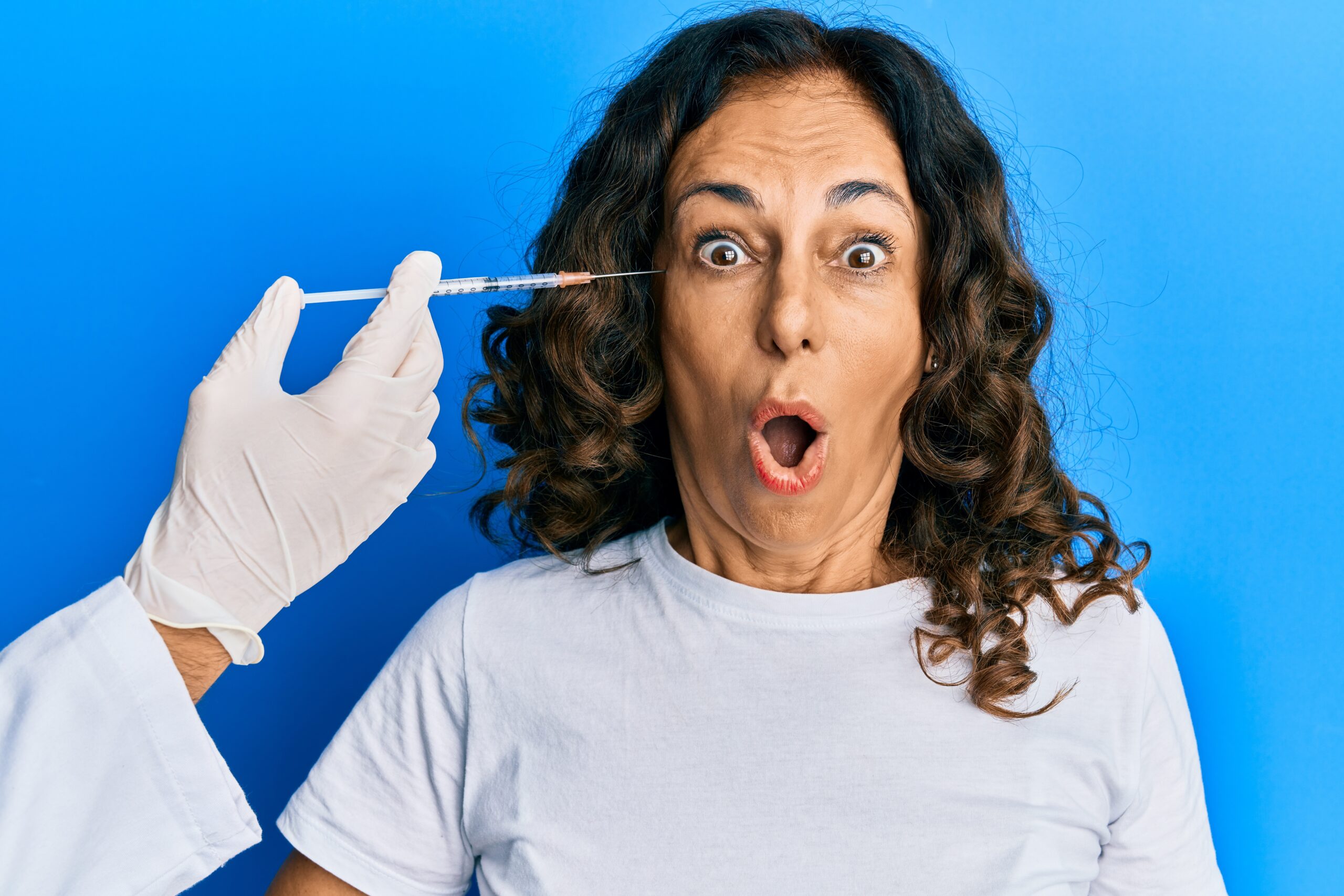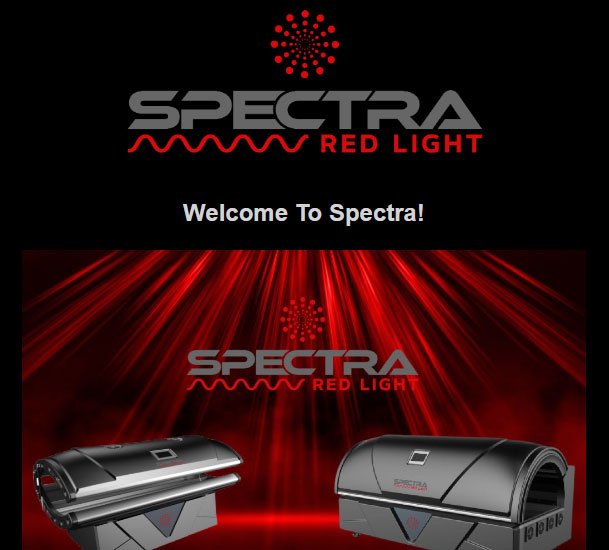In the realm of skin health and rejuvenation, technology often bridges the gap between ancient wisdom and modern innovation. This is how Red Light Therapy (RLT) is introduced. This non-invasive approach harnesses the power of specific wavelengths of light, casting a glow that has sparked interest among those seeking youthful, radiant skin. While the concept might seem futuristic or straight out of a sci-fi novel, it’s rooted in time-tested principles observed by early civilizations.
Today, Red Light Therapy stands as a testament to how light can invigorate and rejuvenate our skin, ushering in a new era of anti aging solutions. Join us as we delve deeper into this illuminating subject, shedding light on its transformative effects for skin health.
The Science Behind Red Light Therapy
Understanding the mechanics of Red Light Therapy (RLT) requires a dive into the cellular activities beneath our skin. At its core, RLT works by utilizing specific wavelengths, focusing particularly on the red and near-infrared spectrum, to stimulate various physiological responses.
Mitochondrial Stimulation:
- Mitochondria, often referred to as the “powerhouses” of our cells, play a pivotal role in energy production. When exposed to red and near-infrared light, mitochondria can increase their activity.
- This increased activity boosts the production of ATP (adenosine triphosphate), which is essentially the energy currency for cells. With more ATP available, cells can function more efficiently and repair themselves more effectively.
Increased ATP Production:
- ATP is not just a source of energy; it’s a vital component in the cellular repair and rejuvenation process. When cells have an abundance of ATP, they can perform their functions at an optimized level. This means that skin cells, in particular, can regenerate and repair more quickly and effectively.
- The enhanced ATP production also promotes cellular growth, facilitating the proliferation of skin cells, and aiding in the repair of damaged tissues.
Different Wavelengths and Their Benefits:
- Red Light (approximately 630-700 nm): This range is effective in targeting skin layers to improve complexion, reduce redness, and enhance overall skin tone. It’s primarily beneficial for surface-level skin concerns.
- Near-Infrared Light (approximately 700-1100 nm): Penetrating deeper than the red light, near-infrared reaches the muscle, bone, and tissues. It aids in reducing inflammation, enhancing circulation, and promoting overall skin health from within.
With the union of these scientific processes, RLT offers a groundbreaking approach to skin health and rejuvenation. By directing focused wavelengths of light onto the skin, we’re essentially fueling our body’s natural processes to revitalize and renew itself, heralding a new era in the pursuit of youthful vibrancy.
Historical Context of Red Light Therapy
The roots of Red Light Therapy (RLT) are deeply entrenched in history. Many ancient civilizations recognized the healing power of light, tapping into its benefits to address various ailments. For example, the Ancient Egyptians are believed to have worshiped the sun for its therapeutic properties, and while their understanding might not have been backed by modern science, their intuitions were not far off the mark.
Fast-forwarding to the modern era, as science evolved, so did the understanding of light’s therapeutic potential. The discovery that specific wavelengths of light had the ability to penetrate human tissue and stimulate cellular processes led to an increased interest in phototherapy, including RLT. Over time, numerous clinical trials and studies sought to explore and validate these effects, adding scientific weight to the anecdotal evidence from history.
From one such groundbreaking study titled “A Controlled Trial to Determine the Efficacy of Red and Near-Infrared Light Treatment in Patient Satisfaction, Reduction of Fine Lines, Wrinkles, Skin Roughness, and Intradermal Collagen Density Increase”, the following observation was made:
“RLT and ELT can extend the spectrum of anti-aging treatment options available to patients looking for mild and pleasant light-only skin rejuvenation.”[1]
This underscores the notion that RLT doesn’t just stand as an alternative but enhances the repertoire of options for those seeking skin rejuvenation.
Further supporting this, another study titled “A study to determine the efficacy of combination LED light therapy (633 nm and 830 nm) in facial skin rejuvenation” remarked:
“Combination red and near infrared LED therapy represents an effective and acceptable method of photo rejuvenation.”[2]
Such endorsements from the scientific community spotlight RLT’s transformation from an age-old practice to a cutting-edge approach in skin health, bridging history with contemporary understanding. As we continue to look forward, RLT stands as a testament to the timeless synergy between light and well-being.
Benefits of Red Light Therapy for Anti Aging
Harnessing the unique properties of the red and near-infrared light spectrum, Red Light Therapy (RLT) presents a myriad of advantages for those wishing to retain a youthful visage and improve overall skin health. Let’s delve into the multifaceted benefits RLT offers:
Collagen Production:
- Role of Collagen: Collagen is a crucial protein found abundantly in our skin. It provides structure, resilience, and elasticity, ensuring our skin remains supple and firm.
- RLT & Collagen Boost: RLT stimulates the production of collagen. When skin cells are exposed to the specific wavelengths of RLT, they increase collagen synthesis, leading to a plumper and more youthful appearance.
Decrease in Fine Lines and Wrinkles:
As RLT promotes collagen production and cellular rejuvenation, it plays a significant role in reducing the appearance of fine lines and wrinkles. Over time, consistent exposure to RLT can lead to smoother skin and a reduction in the depth and prominence of age-related lines.
Improvement in Skin Tone and Texture:
RLT helps balance the skin’s complexion, addressing issues like redness or uneven skin tone. The increased cellular activity results in improved texture, making skin feel softer and look more radiant.
Enhanced Blood Flow and Oxygenation:
One of the lesser-known benefits of RLT is its ability to promote circulation. Enhanced blood flow means more oxygen and nutrients are delivered to the skin cells. This not only nourishes the skin but also helps in flushing out toxins, lending a healthy glow.
Addressing Age Spots and Hyperpigmentation:
Age spots, often seen as dark patches on the skin, can be a telltale sign of aging. RLT aids in lighting these spots over time by promoting skin cell turnover and rejuvenation. Moreover, it can also address other forms of hyperpigmentation, evening out the skin’s appearance.
Boosting Overall Skin Health and Vibrancy:
Beyond the visible signs of aging, RLT works at a cellular level to enhance the skin’s overall health. This means healthier skin barriers, better hydration, and a natural vibrancy that emanates from within.
In summary, RLT doesn’t just target one facet of skin aging but offers a comprehensive approach, addressing both surface-level concerns and deeper cellular processes. Its multifunctional benefits make it an invaluable asset for anyone wishing to retain or regain a youthful complexion.

Comparing Red Light Therapy to Other Anti Aging Approaches
In the quest for youthful skin, a lot of options have flooded the market. Each approach carries its set of advantages and limitations. Here, we will contrast Red Light Therapy (RLT) with other popular anti aging modalities to provide a clearer perspective on its unique position in the anti aging landscape.
Laser Therapy:
- Pros: Effective in targeting specific skin concerns like pigmentation, deep wrinkles, and scars. Can offer visible results in fewer sessions.
- Cons: Can be invasive, leading to potential side effects such as redness, swelling, and a longer recovery period. Typically costlier than other approaches.
- Comparison with RLT: Unlike laser therapy, RLT is non-invasive and usually has no associated downtime. While lasers can ablate or damage the skin to promote healing, RLT encourages natural cellular processes without causing harm.
Facelifts (Surgical Approaches):
- Pros: Provides immediate and dramatic results. Ideal for addressing significant sagging and deep wrinkles.
- Cons: Invasive surgical procedure with potential complications and risks. Requires a significant recovery period and can be expensive.
- Comparison with RLT: RLT is a non-surgical approach that works over time to improve skin health. It’s best for those looking for gradual, natural results without undergoing surgery.
Dermal Fillers:
- Pros: Offers instant plumping and smoothing effects. Can address volume loss, deep lines, and facial contouring.
- Cons: Temporary solution requiring repeated sessions. Potential for allergic reactions, bruising, and asymmetry.
- Comparison with RLT: RLT enhances the skin’s natural functions, promoting health and vibrancy over time. While it doesn’t offer the immediate volume boost of fillers, it nurtures the skin from within for long-term benefits.
Cost, Time, and Effectiveness Comparisons:
- Cost: While procedures like facelifts and certain laser procedures come with a hefty price tag, RLT often proves more cost-effective, especially when considering long-term maintenance.
- Time: Surgical procedures and invasive alternatives often demand considerable downtime for recovery. In contrast, RLT sessions are quick, and users can typically return to their daily activities immediately.
- Effectiveness: While surgical approaches and fillers offer immediate and pronounced results, RLT provides cumulative benefits over time. The advantage lies in its holistic approach, enhancing overall skin health rather than providing a temporary fix.
In the vast spectrum of anti aging modalities, RLT shines as a gentle, holistic, and sustainable approach. While every method has its place and target audience, RLT appeals to those seeking a balance between effectiveness and natural rejuvenation without the associated risks of more invasive procedures.
FAQs about Red Light Therapy for Anti Aging
Navigating the world of anti aging solutions can be daunting, and it’s natural to have questions about newer modalities like Red Light Therapy (RLT). Here, we address some of the most commonly asked questions to provide clarity on this innovative approach.
1.-“How soon can I see results?”
RLT benefits are often cumulative. While some individuals might notice a more radiant complexion or reduced inflammation after just a few sessions, significant changes like reduced fine lines or improved skin tone typically emerge after consistent use over several weeks or months.
2.-“Is RLT safe for all skin types?”
Yes, RLT is generally considered safe for all skin types. Its non-invasive nature means it doesn’t target the skin’s outer layer in a way that can cause discoloration or adverse reactions. However, as with any skincare approach, it’s always best to consult with a professional before beginning if you have pre-existing conditions or concerns.
3.-“Can I combine RLT with other skin solutions?”
Many individuals successfully integrate RLT into broader skincare regimens, combining it with procedures like microdermabrasion, facials, or certain topical products. However, always discuss with a specialist before combining RLT with other procedures to ensure you’re taking the safest and most effective approach.
4.-“Is there any downtime after an RLT session?”
One of the standout benefits of RLT is that there’s typically no downtime. Unlike some other anti aging procedures which can leave skin red or sensitive, RLT allows individuals to return to their daily activities immediately.
5.-“How frequently should I undergo RLT for optimal anti aging results?”
While specific recommendations can vary based on individual goals and skin conditions, many people start with 2-3 sessions per week.
6.-“Are there any side effects to be aware of?”
RLT is generally well-tolerated, with few reported side effects. Some individuals might experience mild redness or warmth after a session because of the increased circulation, especially in areas with cellulite, which subsides quickly. It’s essential to use RLT devices as directed and ensure you’re working with reputable professional brands.
7.-“Is RLT only for the face, or can it be used on other parts of the body?”
While RLT is popularly known for facial rejuvenation, its benefits extend beyond the face. Many people use RLT for the entire body.

Addressing these questions underscores the versatility and appeal of RLT in the anti aging domain. For those intrigued by its potential, it offers a blend of science-backed efficacy and gentle care, a combination often sought but rarely found in the world of skin rejuvenation.
The journey to radiant, youthful skin is an evolving path filled with various methods, technologies, and techniques. Red Light Therapy, while rooted in the ancient appreciation of light’s therapeutic qualities, has emerged as a modern-day marvel in the world of anti aging. By synergizing cutting-edge science with nature’s innate ability to heal and rejuvenate, RLT offers a holistic and effective approach to skin health.
Its appeal is multifaceted from its non-invasive nature to the depth of cellular benefits it delivers. In an age where consumers are increasingly seeking treatments that are not only effective but also kind to their bodies, RLT stands out as a beacon of hope. It bridges the desire for immediate results with the quest for lasting skin health, offering a balanced and sustainable solution.
For those still on the fence, remember: beauty is a reflection of health. And with RLT, you’re not merely addressing the surface but nurturing the very foundations of skin vitality. As technology and understanding continue to evolve, it’s exciting to imagine where the future of RLT might lead. But one thing remains certain, its place in the pantheon of anti aging solutions is not just well-deserved but firmly established.
[1] Wunsch A, Matuschka K. A controlled trial to determine the efficacy of red and near-infrared light treatment in patient satisfaction, reduction of fine lines, wrinkles, skin roughness, and intradermal collagen density increase. Photomed Laser Surg. 2014 Feb;32(2):93-100. doi: 10.1089/pho.2013.3616. Epub 2013 Nov 28. PMID: 24286286; PMCID: PMC3926176.
[2] Russell BA, Kellett N, Reilly LR. A study to determine the efficacy of combination LED light therapy (633 nm and 830 nm) in facial skin rejuvenation. J Cosmet Laser Ther. 2005 Dec;7(3-4):196-200. doi: 10.1080/14764170500370059. PMID: 16414908.

